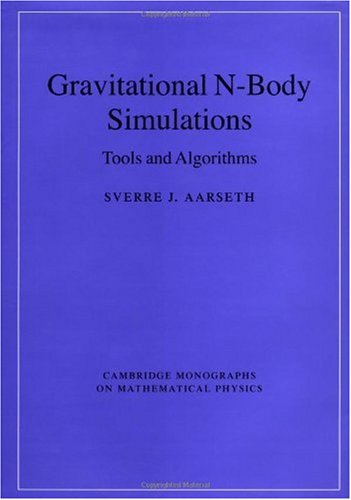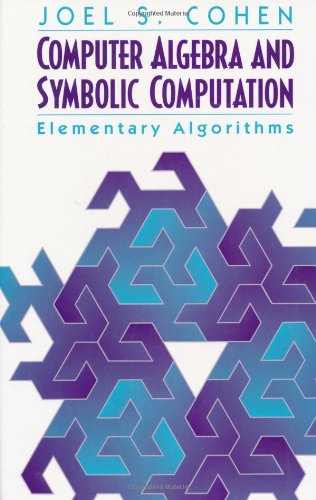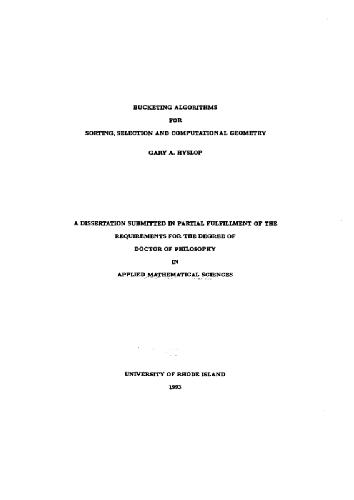Sverre J. Aarseth0521432723, 9780521432726, 9780511065446
Table of contents :
Cover……Page 1
Half-tilte……Page 3
Series-tilte……Page 4
Title……Page 5
Copyright……Page 6
Dedication……Page 7
Contents……Page 9
Preface……Page 15
1.2 Historical developments……Page 19
1.3 Basic concepts……Page 24
1.4 The first steps……Page 32
2.2 Force polynomials……Page 36
2.3 Individual time-steps……Page 39
2.4 Alternative formulations……Page 42
2.5 Hermite scheme……Page 45
2.6 Block time-steps……Page 46
2.7 Time-symmetric method……Page 48
3.1 Introduction……Page 50
3.2 Ahmad–Cohen method……Page 51
3.3 Cosmological adaptation……Page 55
3.4 Multipole expansion……Page 58
3.5 Grid perturbations……Page 61
3.6 Particle in box……Page 64
3.7 Ring scheme……Page 67
4.1 Introduction……Page 69
4.2 Principles of regularization……Page 70
4.3 Levi-Civita transformation……Page 72
4.4 Kustaanheimo–Stiefel method……Page 74
4.5 Burdet–Heggie alternative……Page 78
4.6 Hermite formulation……Page 79
4.7 Stumpff functions……Page 81
5.1 Introduction……Page 84
5.2 Aarseth–Zare method……Page 85
5.3 External perturbations……Page 91
5.4 Wheel-spoke generalization……Page 93
5.5 Heggie’s global formulation……Page 96
5.6 Mikkola’s derivation……Page 98
5.7 Chain treatment……Page 100
5.8 Slow-down procedure……Page 104
5.9 Time-transformed leapfrog scheme……Page 108
5.10 Algorithmic regularization……Page 110
6.2 Basic formulation……Page 112
6.3 Collisional treatment……Page 114
6.4 Flattened systems……Page 121
7.2 N -body codes……Page 123
7.3 Flowcharts……Page 125
7.4 Scaling and units……Page 128
7.5 Input parameters and options……Page 130
7.6 Basic variables……Page 132
7.7 Data structure……Page 135
8.2 Initial conditions for clusters……Page 138
8.3 Primordial binaries……Page 142
8.4 Open clusters and clouds……Page 145
8.5 Eccentric planar orbits……Page 149
8.6 Motion in 3D……Page 151
8.7 Standard polynomials……Page 154
8.8 Regularized polynomials……Page 156
9.1 Introduction……Page 159
9.2 Scheduling……Page 160
9.3 Close two-body encounters……Page 162
9.4 Multiple encounters……Page 165
9.5 Hierarchical configurations……Page 168
9.6 Escapers……Page 171
9.7 Mass loss and tidal interactions……Page 172
9.8 Physical collisions……Page 174
9.9 Automatic error checks……Page 178
10.1 Introduction……Page 182
10.2 Basic Ahmad–Cohen method……Page 183
10.3 Hermite implementation……Page 187
10.4 Parallel adaptations……Page 191
10.5 Black hole binaries in galactic nuclei……Page 193
10.6 Hybrid formulations……Page 195
11.2 General KS considerations……Page 199
11.3 Stumpff Hermite version……Page 204
11.4 KS termination……Page 206
11.5 Unperturbed two-body motion……Page 208
11.6 Slow-down in KS……Page 210
11.7 Hierarchical mergers……Page 212
11.8 Tidal circularization……Page 218
11.9 Chaotic motions……Page 221
11.10 Roche-lobe mass transfer……Page 222
12.2 Compact subsystems……Page 225
12.3 Selection and initialization……Page 229
12.4 Time stepping……Page 231
12.5 Slow-down implementation……Page 235
12.6 Change of membership……Page 237
12.7 Hierarchical stability……Page 239
12.8 Termination……Page 241
12.9 Tidal interactions……Page 243
12.10 Black hole binary treatment……Page 247
13.2 Error analysis……Page 252
13.3 Time-step selection……Page 259
13.4 Test problems……Page 260
13.5 Special-purpose hardware……Page 264
13.6 Timing comparisons……Page 268
14.2 Getting started……Page 270
14.3 Main results……Page 272
14.4 Event counters……Page 273
14.5 Graphics……Page 275
14.6 Diagnostics……Page 276
14.7 Error diagnosis……Page 279
15.1 Introduction……Page 282
15.2 Core radius and density centre……Page 283
15.3 Idealized models……Page 285
15.4 Realistic models……Page 289
15.5 Stellar evolution……Page 297
15.6 Tidal capture and collisions……Page 300
15.7 Hierarchical systems……Page 303
15.8 Spin–orbit coupling……Page 305
15.9 Globular clusters……Page 310
16.1 Introduction……Page 315
16.2 Molecular clouds……Page 316
16.3 Tidal disruption of dwarf galaxies……Page 318
16.4 Interacting galaxies……Page 319
16.5 Groups and clusters……Page 321
16.6 Cosmological models……Page 322
17.2 Planetary formation……Page 325
17.3 Planetesimal dynamics……Page 330
17.4 Planetary rings……Page 335
17.5 Extra-solar planets……Page 337
18.1 Introduction……Page 341
18.2 Few-body simulations……Page 342
18.3 Three-body scattering……Page 348
18.4 Binary–binary interactions……Page 352
18.5 Chaos and stability……Page 358
A.1 Transformations and equations of motion……Page 368
A.2 External perturbations……Page 370
B.1 Transformations and switching……Page 372
B.2 Evaluation of derivatives……Page 374
B.3 Errata……Page 376
C.2 Initialization……Page 377
C.3 Termination……Page 378
C.4 Escape of hierarchies……Page 379
D.2 Ghost particles……Page 381
D.3 KS procedures for averaging……Page 382
D.4 Determination of pericentre or apocentre……Page 383
D.5 Partial unperturbed reflection……Page 384
E.1 Single particles……Page 385
E.2 Regularized KS pairs……Page 386
F.1 N-body treatment……Page 387
F.2 Stellar evolution……Page 388
G.1 Introduction……Page 389
Appendix H Hermite integration method……Page 392
References……Page 395
Index……Page 426







Reviews
There are no reviews yet.